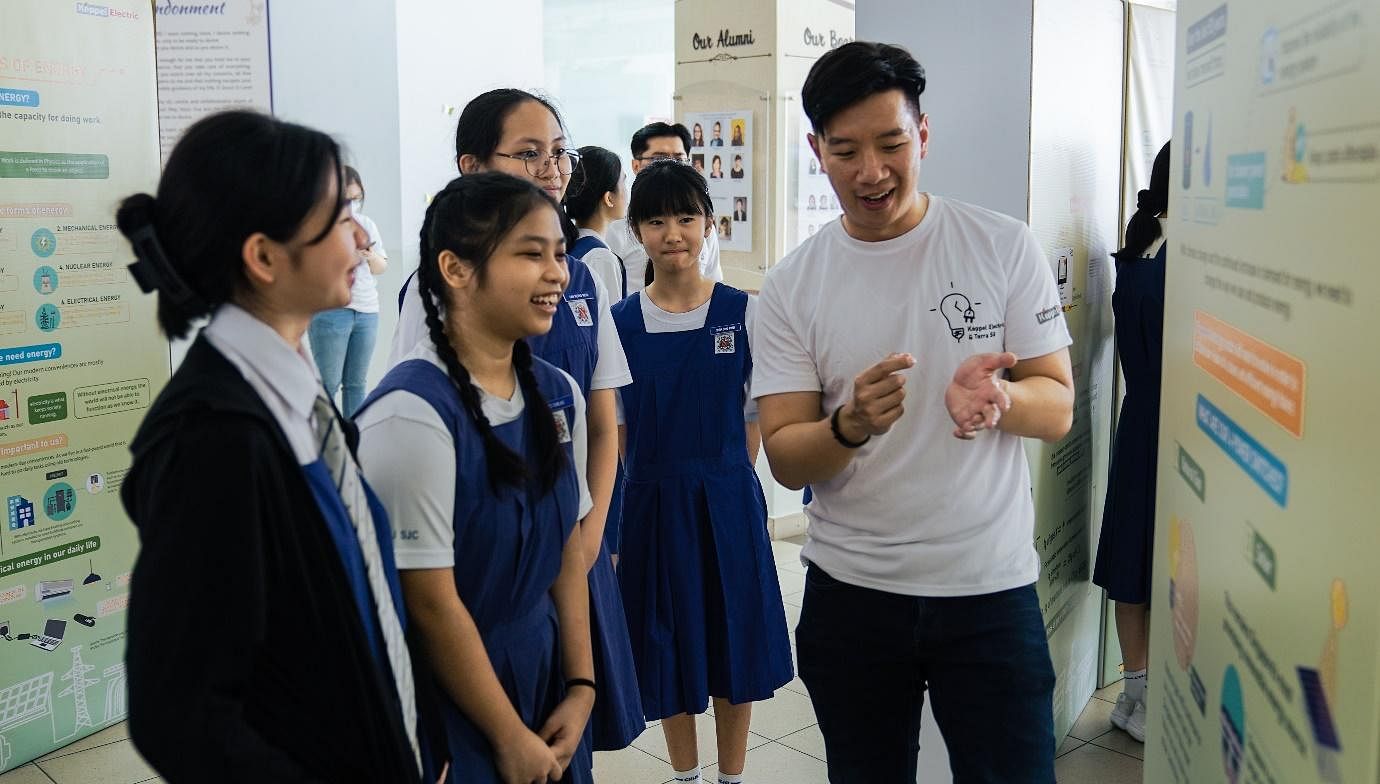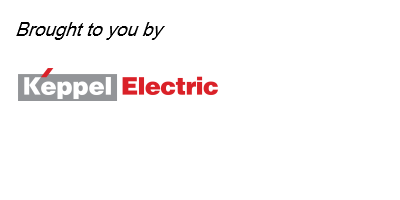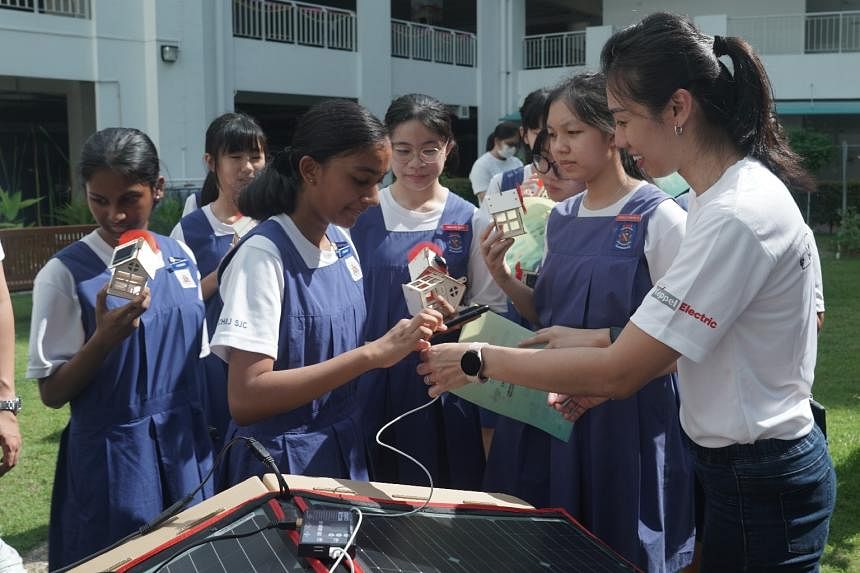Groups of students from CHIJ St Joseph’s Convent gathered excitedly around the model house. The 1m x 1m model, big enough for a student to snuggle herself inside, sported a purplish-black solar panel on one side of its roof.
Young faces grinned in anticipation as the facilitator explained that they would get to try their hand at building their own model house and learn about how solar power is generated. Breaking into smaller groups, the students fiddled and fixed up their individual palm-sized house model kits.
The students were then assisted in assembling the wooden walls, floors and roof, and finally the square solar panel which converts light into electrical energy. A red fan attached to the roof spun when the solar panel was receiving sufficient light to generate power.
Finally, it was time to test their creations. The model houses were brought out to the school field into the bright sunlight – and to the students’ delight, the many red fans began to spin. For the bigger demonstration model house, the energy generated from the table-sized solar panel was enough to charge a mobile phone.
“The workshop was an eye-opening experience for me as it made me realise the usage of solar energy in Singapore. I now have a better understanding of how renewable energy can power our devices at home,” says Shalini Raja, a Secondary 2 student.
Raising climate-conscious citizens
This workshop in building a solar-powered model house was part of Keppel Electric’s ongoing environmental outreach efforts in Singapore’s schools. It built on the success of its roving environmental exhibition Powering a Brighter Future, which reached about 20,000 students in 2022. Powering a Brighter Future was launched by Keppel Electric and managed by Terra SG, a regional sustainability social enterprise.
This year, Keppel Electric has an ambitious goal: to bring Phase 2 of the exhibition to another 100,000 students by the end of 2023. The exhibition featured new infographics and interactive elements, including the solar-powered house-making workshop.
Ms Janice Bong, Managing Director, Power and Renewables, Infrastructure Division of Keppel says, “With the growing focus on sustainability and climate action, we are heartened by the students’ participation in the Powering a Brighter Future programme. Keppel will continue to support Singapore’s sustainability efforts to inspire the next generation to be stewards for climate action.”
The exhibition has been well-received by students and educators alike. Ms Kathleen Ang, a teacher specialising in Character and Citizenship Education at CHIJ St Joseph’s Convent, commended the exhibition for its interactive elements.
“Being truly sustainable would require us to meet the needs of the current generation without compromising those of the future. When we teach our students about sustainability, it will require them to give up on their short-term comforts.
“This is a challenging message to bring across to them,” she says. “The Powering a Brighter Future exhibition allowed students to see in real time how solar energy is generated and how their daily actions may not be as green as they thought.”
For Secondary 3 student M M Kannya, the model house workshop was her favourite part of the exhibition. “It really amazed me how the solar panel could create that much energy to power my phone.” The 15-year-old adds, “What I can do as a student to help the environment is to advocate the switch to reusables among my peers.”
Learning how to conserve energy
In Singapore, electricity is mainly generated by combusting natural gas, the least carbon-emitting fossil fuel.
Solar power produced by photovoltaic panels is growing as a supplementary power source. Future alternatives include tapping into regional power grids and exploring natural gas and low carbon alternatives. The exhibition explains that these are Singapore’s Four Power Switches.
Given the current carbon footprint of energy use, the best way to reduce carbon emissions causing climate change is to reduce energy consumption. To remind themselves and their families to save energy, students brought home a piece of the exhibition with them – a folder printed with energy-saving tips.
For example, “we should turn off the air-conditioning and use fans instead to save energy, and turn off power sockets when they are not in use,” says Clarissa Lew, from CHIJ St Joseph’s Convent.

Some students may also be inspired by the exhibition to lower their household carbon emissions even further. Keppel Electric’s ecoGreen plans generate electricity from carbon-neutral renewable energy certified by the Renewable Energy Certificate.
In private landed housing, Keppel Electric can go further to assist households with solar panel installations by providing a complimentary onsite assessment, installation proposals, financing options and installation within three to four weeks. Households generating more solar energy than is used can even sell excess electricity back to the grid.
As Kannya learned from the exhibition: “There are many ways to drive sustainability efforts.”
Learn more about Keppel Electric’s contribution to a more sustainable future here.


